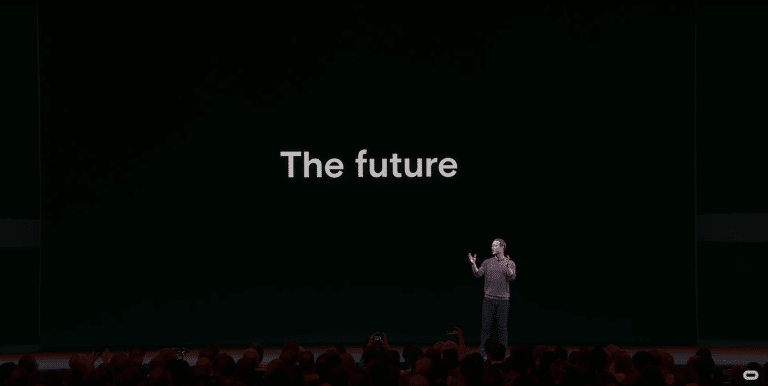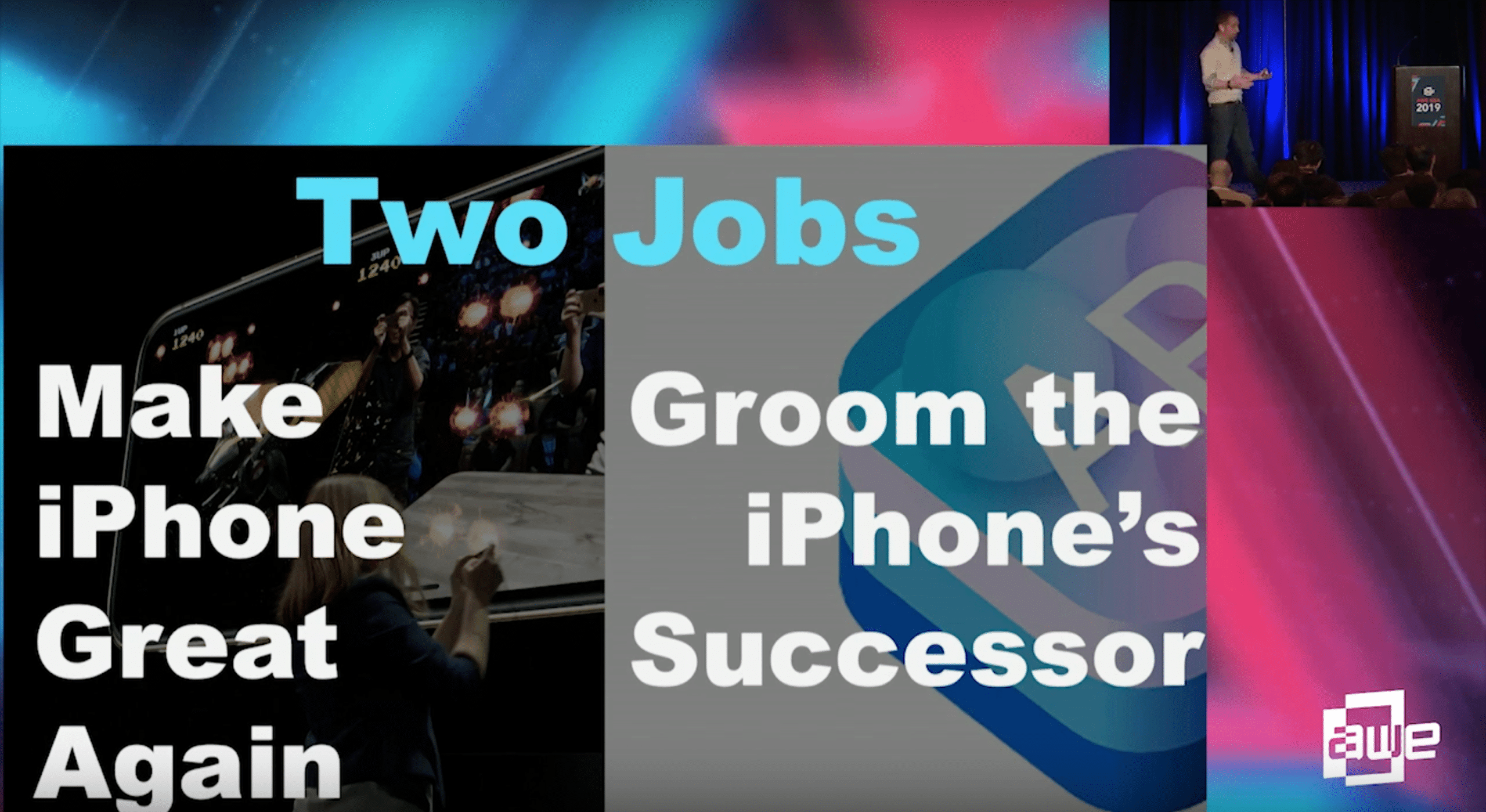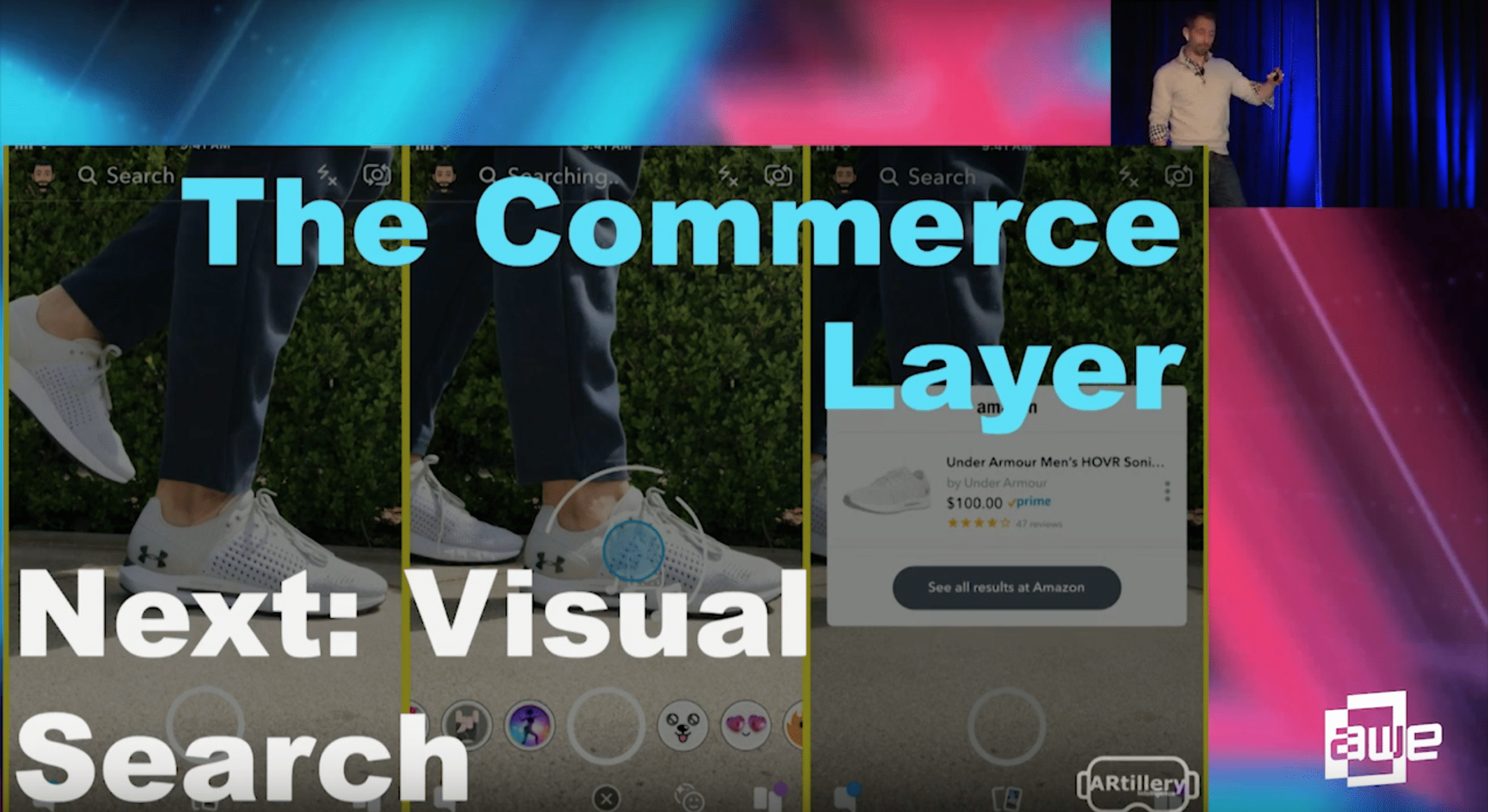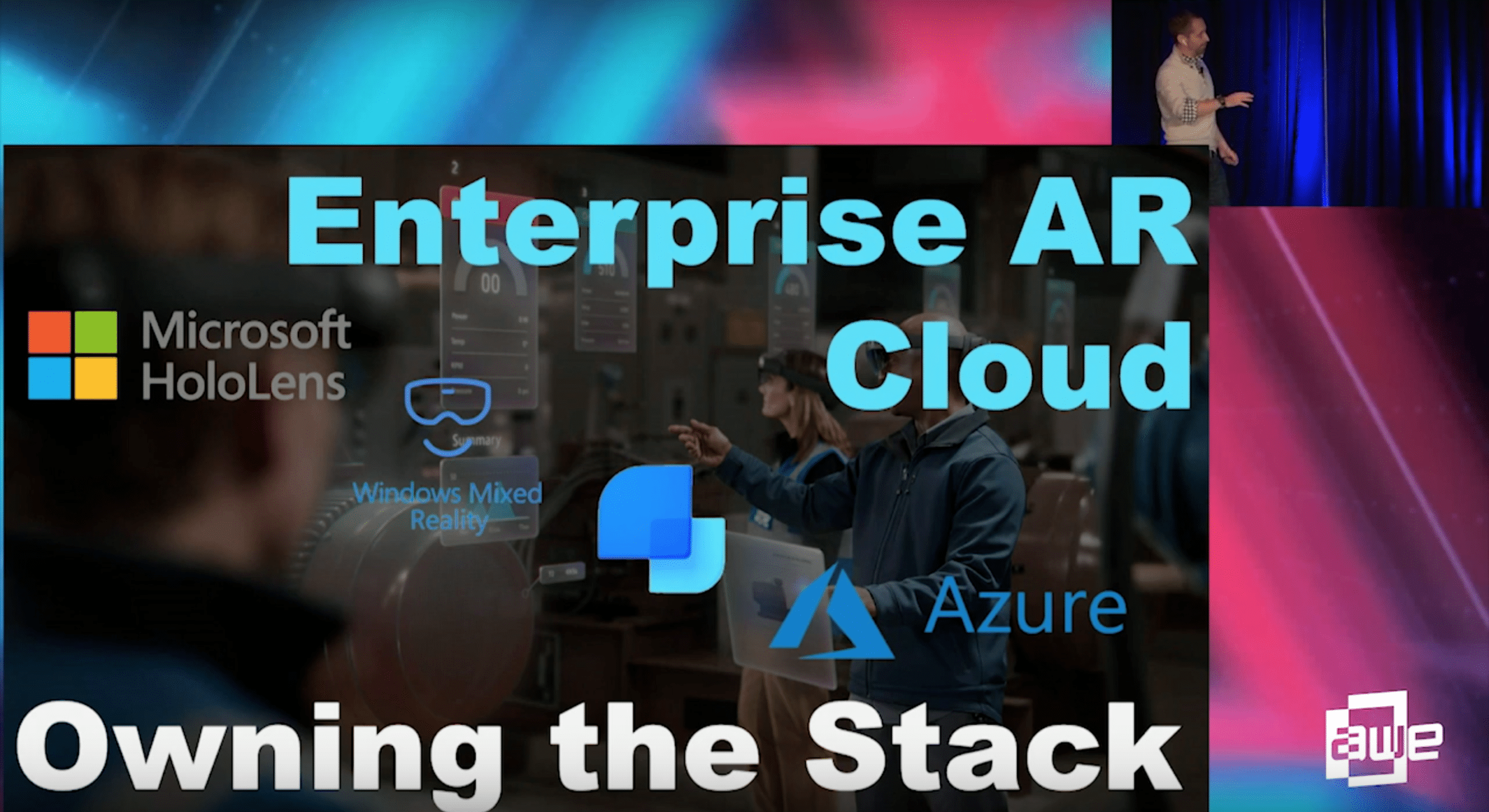
XR Talks is a series that features the best presentations and educational videos from the XR universe. It includes embedded video, as well as narrative analysis and top takeaways. Speakers’ opinions are their own. For a deeper indexed and searchable archive, subscribe to ARtillery PRO.
Regular AR Insider readers know that we have a longstanding hypothesis that following tech giants’ moves and motivations can reveal AR’s likely trajectory. The thought is that they’re compelled to future-proof tens of billions in annual revenue. That can be quite a motivational force.
That, plus the sheer dollars the “big five” are collectively investing in AR (and VR for that matter), is a strong confidence signal for the technology’s future. Based on their gravitational pull and ability to move markets, these investments could accelerate AR’s much-needed development.
But more important is extrapolating the shapes it will take. Looking at the flavors of AR that the big five are developing, they each trace back to their core businesses. Can that realization help inform where they’re headed, and thus “skate to where the puck is going” to fill ecosystem gaps?
For Apple, it’s all about hardware and making its devices more attractive. For Google, it’s all about search, and boosting query volume with more user touchpoints. For Facebook, it’s ad-supported social interaction. For Amazon, it’s selling us stuff. And for Microsoft, it’s enterprise productivity.
We’ve examined evidence from each of the Big 5 in individual articles, a report, and a chapter in Charlie Fink’s book Convergence. But to synthesize it all in one place, AR Insider’s Mike Boland broke down the big five one by one at AWE, which is this week’s featured talk (video below).

Apple
Starting with Apple, it has several AR balls in the air and is cultivating near and long-term strategies. Near term, AR’s job is to make the maturing iPhone sexy again. It’s also to acclimate the world to AR — both users and developers — so the roads are paved for its long-term play.
That long term play of course means AR glasses. As smartphones continue to reach global saturation and decelerated revenue growth, Apple’s developing a succession plan. That will likely be a suite of wearables, including AR glasses, that achieves the signature Apple platform lock-in.

Facebook likewise has short and long term plans. In the near term, AR aligns with its ad revenue model in that socially-fueled lenses boost user engagement and ad performance. It’s only begun to monetize this with brand advertisers, including the recent Spark AR integration at Instagram.
Long term, it wants to be the social layer for the spatial web. Just like it’s the 2D web’s identity layer, it can solidify itself by powering social interaction in AR. We’re talking permission-based information we reveal about ourselves in the mirrorworld. And AR advances its parallel VR play.

Continuing with the “layer” analogy, Google wants to be the information layer for the spatial web. Just like it rose to power by indexing the web, it wants to build an “internet of places” that extends that concept to the world around us. It wants to make the physical world clickable.
And it’s in a good position to do so. Its image database from years of indexing images provides a sort of training set for object recognition, which is parlayed into visual search. And that could shine in high-intent (monetizable) use cases like identifying products and local discovery.

Amazon
Amazon meanwhile wants to be the commerce layer. Near term, that means product visualization to boost eCommerce conversion rates and reduce returns through more informed purchases. Longer-term, like Google, it has strong assets in place to be a visual search powerhouse.
As we examined earlier this week, Amazon is trying to gain ground from failing market a device (Fire Phone) in early stages of the smartphone era. So wearables and echo devices will gain that direct user touchpoint. AR is part of that vision to be an immersive shopping front end.

Microsoft
Last but definitely not least is Microsoft. It wants to be the productivity layer of the spatial web. And it’s off to a good start. Just like Amazon, it ceded ground to Apple and Google early in the smartphone wars. So it’s now motivated to own the hardware in computing’s next era.
That’s not just the best-in-class (though currently supply-constrained) Hololens, but it’s building out the rest of the stack for Apple-like vertical integration. That will be anchored in the OS (Windows Mixed Reality), the application layer (Remote Assist), and the AR cloud backbone (Azure).

Too Big to Fail?
Synthesizing all of the above, who’s best positioned? Do the big five’s self-interested approaches engender non-overlapping territories to coexist in the spatial web’? Could those with inherent motivations for data collection (ad revenue) be disadvantaged in AR’s inevitable privacy minefield?
Furthermore, could AR’s future include a different cast of characters. The past few tech revolutions saw incumbents facing an innovator’s dilemma, only to be unseated by the current big five. But have they become platforms too big and embedded to face the same fate, as some have argued?
“All of those players, and the gravitational pull they have to sway the trajectory, doesn’t necessarily mean they’re going to be the winners in the next era. We could have a new big five or a new cast of characters ten years from now. I think that there are a lot of players emerging now that have some advantage in terms of their native product focus or being born into this spatial computing era. […] It’s not just going to be a zero-sum game. It’s going be a rich ecosystem. But the big 5 may not be the same five players five years from now.”
See the full talk below.
For deeper XR data and intelligence, join ARtillery PRO and subscribe to the free AR Insider Weekly newsletter.
Disclosure: AR Insider has no financial stake in the companies mentioned in this post, nor received payment for its production. Disclosure and ethics policy can be seen here.
Header image credit: Facebook, YouTube
